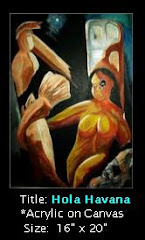
No, not the one in the mid-1960s with the Beatles and the Dave Clark Five.
The one that arrived nearly a decade earlier, when British TV shows began to appear on American Television.
Shows like The Adventures of William Tell and The Buccaneers, both produced for the ITV network and syndicated in the United States (in 1958 and 1956 respectively).
But the forerunner for this invasion came from Sapphire Film’s successful 4-year run of The Adventures of Robin Hood, which aired on CBS from 1955 to 1960, and thereafter in syndication.
This was the first of succession of successful series commissioned by media mogul Lew Grade for international distributorship. Others that would follow included Roger Moore’s The Saint, Patrick McGoohan’s Danger Man (aka Secret Agent) and The Prisoner, and The Muppets.
Starring Richard Greene, the 143 episodes were well budgeted and shot like a movie, on 35mm film.
Although first signed at the age of 20 in 1938 by 20th Century Fox as their answer to MGM’s matinee idol Robert Taylor, Greene’s rising star faltered when WWII broke out and he left Hollywood to serve in the 27th Lancers where he was commissioned and promoted to Captain in 1944.
Greene received good notices after the war (including in Forever Amber in 1947), but his career never caught fire. By the early 1950s and after a series of disappointing swashbuckling roles, his finances were in shambles.
He was therefore convinced to take on the role of Robin Hood, and in short order the series was big hit.
While he would appear occasionally in other shows during the 1960s and 1970s, he would never again approach the kind of success he had during those four years of wearing green tights.
Greene died in 1985 of cardiac arrest.
While Greene was undeniably the star of the show, he was joined by an ensemble cast which included:
- Alan Wheatley as the Sheriff of Nottingham.
- Archie Duncan as Little John. Duncan was already well known to TV audiences for playing Inspector Lestrade in 1954 series Sherlock Holmes (see Sherlock Holmes On The Small Screen)
- Bernadette O'Farrell (years 1&2) and Patricia Driscoll (years 3&4) both played Maid Marian.
- Alexander Gauge played Friar Tuck.
- Richard Coleman played Alan-a-Dale who went on to star in a pair of British Sitcoms in the 1970s (And Mother Makes Three, And Mother Makes Five).
- Donald Pleasence, Hubert Gregg, and Brian Haines all played Prince John at one time or another.
And guest stars who either were, or would become, familiar to US audiences included Robert Shaw, Edward Mulhare, Leo McKern and Michael Caine.
Scripts were often penned by blacklisted writers from the United States, caught up in McCarthyism, who used pseudonyms to stay under the radar.
While based on a fictional character, the show’s producers took pains to try to make each episode true to the times in which it took place. They utilized historians as consultants, and interwove bits of real history into the plots.
And perhaps most innovative of all, the show’s Art director Peter Proud put more than 140 set pieces (stairways, fireplaces, stone walls, entrance halls . . . even fake trees) on wheels, and would mix and match them to quickly create new sets.
Although considered a `kids’ show back in the 1950s, it is well served by intelligent scripts, great art direction, and good production values. The shows hold up pretty well, more than 50 years after they were first shot.
The Internet Archive has roughly 60 half hour episodes freely available for download.
You can access them HERE:
For those of us who grew with television in the 1950s, returning to Sherwood Forrest is like going home again.
If you’ve got any `kid’ left in you at all, it’s well worth the journey.













